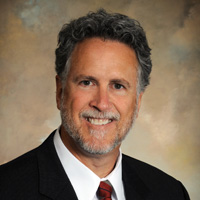Does Your Trust Have an Environmental Indemnification Clause?
Trusts that include farmland, industrial or commercial property could have this clause, so it’s important to know what it means and why it's there.


I cannot say why some attorneys place an environmental indemnification clause in their trusts when so many other attorneys do not. The primary purpose of the clause is to encourage a trust company or individual trustee to accept a trust appointment wherein the trust owns or will own real property that has been used as farmland, industrial or commercial property. These uses are more likely to involve the presence of substances and chemicals that could escape into the air, soil or groundwater, thereby causing a health or environmental hazard, than residential properties.
Typical wastes that can contribute to a hazard include cleaning solvents, spent acids and bases, metal finishing wastes, painting wastes, sludges from pollution-control units, batteries, restaurant grease traps and filling station underground fuel tanks. The types of wastes may be categorized as ignitable (flammable), corrosive (acids), reactive (unstable and capable of releasing toxic gases or detonating) and toxic (heavy metals, pesticides, herbicides and other compounds).
Many states have environmental protection laws, but all are preempted by the Comprehensive Environmental Response, Compensation, and Liability Act, known as CERCLA or Superfund. CERCLA is supplemented by several subsequent acts directed at certain categories of hazardous waste that aid state governments and landowners, enforce protections for workers handling such materials and provide federal funds and an enforcement power to clean up environmental hazardous waste sites however they are discovered.

Sign up for Kiplinger’s Free E-Newsletters
Profit and prosper with the best of expert advice on investing, taxes, retirement, personal finance and more - straight to your e-mail.
Profit and prosper with the best of expert advice - straight to your e-mail.
The EPA is also empowered to recover costs related to that cleanup from financially able and responsible owners and third parties. This is why trusts indemnify the trustee from liability, but do those provisions adequately protect the trust corpus and the trust beneficiaries?
Examples of trust provisions related to environmental cleanup
Here are some common trust provisions that address environmental cleanup (each is followed by an explanation of its meaning and purpose):
My Trustee may inspect Trust property to determine compliance with or to respond to any environmental law affecting the property. For the purposes of this Trust, environmental law means any federal, state, or local law, rule, regulation, or ordinance protecting the environment or human health. My Trustee may refuse to accept property if my Trustee determines that the property is or may be contaminated by any hazardous substance or is or was used for any purpose involving hazardous substances that could create liability to the Trust or to any Trustee.
What it means: The trustee may refuse to fund the trust with contaminate property even when directed by the settlor or decedent. Therefore, the property remains the responsibility of the current owner or his or her estate. If the settlor wants the property to be accepted in the trust for cleanup, he or she would want to provide additional instructions.
My Trustee may use Trust property to: conduct environmental assessments, audits, or site monitoring; take remedial action to contain, clean up, or remove any hazardous substance including a spill, discharge, or contamination; institute, contest, or settle legal proceedings brought by a private litigant or any local, state, or federal agency concerned with environmental compliance; comply with any order issued by any court or by any local, state, or federal agency directing an assessment, abatement, or cleanup of any hazardous substance; and employ agents, consultants, and legal counsel to assist my Trustee in these actions.
What it means: The trustee may expend trust funds to assess property in the trust for hazards, hire experts and workers and cooperate with cleanup efforts.
My Trustee is not liable for any loss or reduction in value sustained by the Trust as a result of my Trustee’s decision to retain property on which hazardous materials or substances requiring remedial action are discovered unless my Trustee contributed to that loss through willful misconduct or gross negligence. My Trustee is not liable to any Beneficiary or to any other party for any decrease in the value of property as a result of my Trustee’s actions to comply with any environmental law, including any reporting requirement.
What it means: The trustee cannot be required to cover trust costs or losses in value in relation to its acceptance and retention of hazardous property unless the trustee contributed to the development of the hazard. For instance, if the trustee is responsible for an operating business that handles hazardous waste materials, the business failed to comply with the rules and regulations imposed on such activities and the trustee knew, should have known or should have discovered and addressed the violation but did not.
My Trustee may release, relinquish, or disclaim any power held by my Trustee that my Trustee determines may cause my Trustee to incur individual liability under any environmental law.
What it means: The trustee may inform the beneficiaries in writing that it has relinquished any part of the environmental indemnification clause that may be construed under law as an acceptance of responsibility for the cleanup costs under CERCLA.
It appears that CERCLA primarily imposes liability on the potentially responsible party based on that party’s actual contribution, in whole or in part, to the presence of uncontained hazardous substances at a site. However, civil liability arises through the mere existence of a violation. CERCLA also includes limitations for an inability to pay for the cleanup, thereby placing the costs mostly on state and federal agency funds. But where a party has some level of intent or reckless disregard in relation to a violation, the agency may bring criminal charges.
Structuring ownership so company is responsible rather than trustee
I think there may be a benefit to the trustee or the settlor structuring the ownership of potentially concerning property in a business entity, such as a limited liability company (LLC), even if the property is wholly owned by the trust. This places the responsibility on the manager of the company rather than the trustee and may limit access to other trust assets and investments to cover the cleanup costs or to reimburse the EPA.
Possible environmental issues are just one aspect of ownership liability where an additional buffer may be beneficial. It may be difficult to find a willing successor trustee absent such structuring and additional indemnification when a known environmental issue exists.
I recommend that a settlor or administrator of an estate who will fund a trust with real property with known or potential environmental issues consult with a CERCLA attorney for the proper limits on liability and indemnification to avoid inadvertently causing legatees and beneficiaries to undertake liabilities unnecessarily.
Profit and prosper with the best of Kiplinger's advice on investing, taxes, retirement, personal finance and much more. Delivered daily. Enter your email in the box and click Sign Me Up.

Timothy Barrett is a Senior Vice President and Trust Counsel with Argent Trust Company. Timothy is a graduate of the Louis D. Brandeis School of Law, past Officer of the Metro Louisville Estate Planning Council and the Estate Planning Council of Southern Indiana, Member of the Louisville, Kentucky, and Indiana Bar Associations, and the University of Kentucky Estate Planning Institute Committee.
-
 The '8-Year Rule of Social Security' — A Retirement Rule
The '8-Year Rule of Social Security' — A Retirement RuleThe '8-Year Rule of Social Security' holds that it's best to be like Ike — Eisenhower, that is. The five-star General knew a thing or two about good timing.
-
 Should I Buy Stocks or Should I Buy Bonds Right Now?
Should I Buy Stocks or Should I Buy Bonds Right Now?Generally speaking, stocks provide reasonable growth while bonds provide stable income. Each play important roles in diversified portfolios.
-
 You Were Planning to Retire This Year: Should You Go Ahead?
You Were Planning to Retire This Year: Should You Go Ahead?If the economic climate is making you doubt whether you should retire this year, these three questions will help you make up your mind.
-
 Are You Owed Money Thanks to the SSFA? You Might Need to Do Something to Get It
Are You Owed Money Thanks to the SSFA? You Might Need to Do Something to Get ItThe Social Security Fairness Act removed restrictions on benefits for people with government pensions. If you're one of them, don't leave money on the table. Here's how you can be proactive in claiming what you're due.
-
 From Wills to Wishes: An Expert Guide to Your Estate Planning Playbook
From Wills to Wishes: An Expert Guide to Your Estate Planning PlaybookConsider supplementing your traditional legal documents with this essential road map to guide your loved ones through the emotional and logistical details that will follow your loss.
-
 Your Home + Your IRA = Your Long-Term Care Solution
Your Home + Your IRA = Your Long-Term Care SolutionIf you're worried that long-term care costs will drain your retirement savings, consider a personalized retirement plan that could solve your problem.
-
 I'm a Financial Planner: Retirees Should Never Do These Four Things in a Recession
I'm a Financial Planner: Retirees Should Never Do These Four Things in a RecessionRecessions are scary business, especially for retirees. They can scare even the most prepared folks into making bad moves — like these.
-
 A Retirement Planner's Advice for Taking the Guesswork Out of Income Planning
A Retirement Planner's Advice for Taking the Guesswork Out of Income PlanningOnce you've saved for retirement, you'll need your nest egg to support you for as many as 30 years. For that, you need a clear income strategy, not guesswork.
-
 Why Smart Retirees Are Ditching Traditional Financial Plans
Why Smart Retirees Are Ditching Traditional Financial PlansFinancial plans based purely on growth, like the 60/40 portfolio, are built for a different era. Today’s retirees need plans based on real-life risks and goals and that feature these four elements.
-
 To My Small Business: Well, I've Been Afraid of Changin', 'Cause I've Built My Life Around You
To My Small Business: Well, I've Been Afraid of Changin', 'Cause I've Built My Life Around YouWhile thinking about succession planning might feel like anticipating a landslide (here's to you, Fleetwood Mac), there are strategies you can implement to manage the uncertainty and the transition.